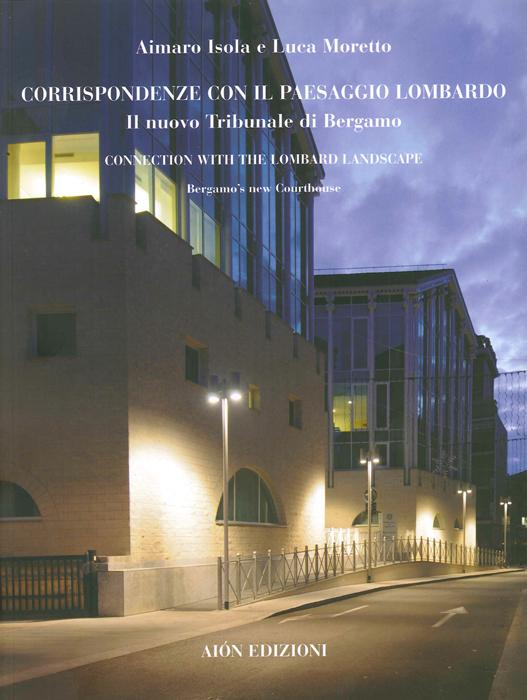books
Corrispondenze con il paesaggio lombardo
Il nuovo Tribunale di Bergamo
Ogni atto costruttivo presuppone inesorabilmente il sacrificio. Sacrificio che “tocca” gli uomini, la terra e le idee. Così Aimaro Isola e Luca Moretto nella relazione di progetto che accompagna il nuovo tribunale. Mi piace iniziare così. Ma aggiungo. Il sacrificio è spesso conseguenza di un gesto radicale. Eppure osservando gli acquerelli preliminari e le fotografie di cantiere, sfiorando l’edificio e sovrapponendolo all’architettura della città di Bergamo, le mie emozioni sono molto simili alla gioia o, per non esagerare, alla serenità che si manifesta nel mondo delle costruzioni quando sventola la bandiera sul tetto dell’edificio ancora incompiuto. Serenità, bisogna dire, che deve accompagnare chi si accinge a scandagliare l’architettura, qualcosa di misterioso e insieme d’infantile (perché mi ricorda i primi giochi dell’infanzia).
L’architettura, si sa, esprime una in-finità di aspetti: esprime i programmi, le funzioni, le negoziazioni, certamente l’economia, le conoscenze storiche, tecniche e costruttive. Oggi l’architettura esprime le immagini luccicanti e le parole suadenti che veicolano idee bislacche proposte da archistar capricciosi. Ma l’architettura è rimasta, talvolta e per fortuna, l’attività umana per eccellenza. Un’attività che coinvolge una costellazione di persone, non solo l’architetto, che mette in forma demoni e metriche, che dialoga e viola con e ipaesaggi, che de-forma, cercando qualche elemento di novità, canoni convenzionali e forse un po’ desueti. Questo volume, ricco di immagini di cantiere, di disegni ad acquerello, di working drawings, di gesti e di parole “altre”, cerca di esprimere il complesso legame tra costruzione e rappresentazione che tocca oggi come ieri il mondo dell’architettura.
Each act of building inevitably entails sacrifice. Sacrifice which “touches” men, the land and ideas. So it is, according to Aimaro Isola and Luca Moretto in their Project Reportaccompanying the new Courthouse. Thus I have chosen to begin. But I will add: sacrifice is often the consequence of a radical gesture. And yet, examining the preliminary watercolours and construction site photographs, touching upon the building and superimposing it upon the architecture of the city of Bergamo, my emotions are very akin to joy or, so as not to overstate the point, to the serenity that manifests itself in the building world of construction when it unfurls the flag on the roof of the still incomplete building. A serenity, let it be said, which must accompany anyone about to delve into architecture, something mysterious and at the same time childlike (as it reminds me of the first games of childhood).
Architecture, as is well known, expresses an in-finity of aspects: it expresses plans, functions, negotiations, certainly economics, historical, technical and structural knowledge. Today architecture expresses glittering images and persuasive words conveying crackpot ideas propounded by capricious “archistars”. Yet architecture has remained – at times and happily – the human activity par excellence. An activity – a craft, I would continue to define it, despite recent shifts – which involves a constellation of people, not just the architect, which gives form to demons and metrics, which dialogues with and violates landscapes, which de-forms, seeking some element of novelty, conventional and perhaps slightly outmoded canons.
This volume, rich in images of the construction site, watercolour sketches, working drawings, gestures and “other” words, attempts to express – albeit partially – the complex link between construction and representation which touches the world of architecture, today as yesterday.
estratto dall'Introduzione di Cesare Piva

